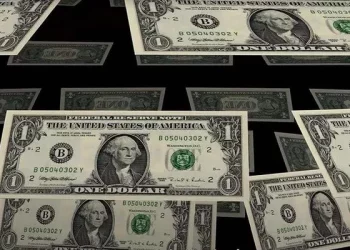The recent decision by U.S. authorities to seize Russian assets has reignited discussions surrounding the enduring dominance of the dollar as the global reserve currency. Despite these developments, analysts at Wells Fargo argue that while the move may contribute to ongoing efforts to diversify away from the dollar, its position as the primary reserve currency is expected to remain unchallenged in the near term.
The measures taken by the United States and its allies, including the prohibition of transactions with Russia’s central bank and finance ministry, as well as the blocking of approximately $300 billion in sovereign Russian assets in Western institutions, come in response to Russia’s invasion of Ukraine. The U.S. House of Representatives has further escalated potential consequences by passing a bill authorizing the confiscation of Russian assets held in American banks for transfer to Ukraine.
However, the prospect of such actions has prompted warnings of retaliation from Russian officials. Dmitry Medvedev, a key ally of President Vladimir Putin, has suggested that Russia could respond by seizing the assets of U.S. citizens, including property and cash. While this may have minimal impact on the dollar’s reserve currency status, it could draw attention from China, given its significant exposure to the U.S. dollar.
Concerns regarding the U.S. fiscal outlook and the frequent use of economic sanctions have previously raised doubts about the dollar’s role as a global reserve currency in some quarters. The potential confiscation of assets adds another layer of risk to this perception.
Analysts at Wells Fargo suggest that geopolitical tensions between the U.S. and China could prompt the latter to reduce its reliance on the dollar and other advanced economy assets. However, they note that previous efforts to diminish the dollar’s importance, such as bilateral clearing arrangements and the acceptance of alternative currencies for trade, have had limited impact.
Despite these challenges, Wells Fargo underscores the enduring characteristics that define a reserve currency, including liquidity, stability, and widespread acceptance. While other currencies possess some of these qualities, they also face significant hurdles, such as shallower debt markets and geopolitical concerns.
Morgan Stanley shares a similar outlook, emphasizing the continued strength of the dollar across various economic and financial metrics. While acknowledging the potential for a modest increase in the international role of the Chinese yuan, they anticipate only a gradual decline in the dollar’s dominance due to the challenges facing alternative currencies.
In conclusion, while recent developments may fuel discussions about the dollar’s reserve currency status, both Wells Fargo and Morgan Stanley assert that its position is likely to endure for the foreseeable future, supported by its fundamental characteristics and the absence of viable alternatives.

























